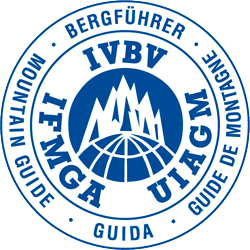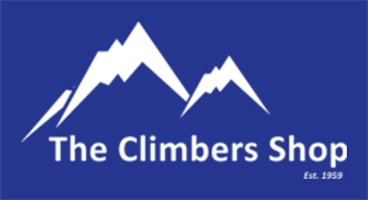Some thoughts on rope choice linked into decision making
So, as a BMG IFMGA Mountain Guide and climber what ropes do I use?
Firstly, I have different obligations and also a mix of uses to consider when working as a mountain guide
- The terrain
- How many people,
- Is it one or multiple days when you’ll be attempting different styles of routes on different days
- What are the clients objectives over the time you have with them e.g. do they want to develop as a lead climbing to become more independent or are they just wanting more of an experience with less input in instruction?
You pack your backpack for the day or route in mind, as you choose the rope best suited to where you’re going and what you’re climbing.
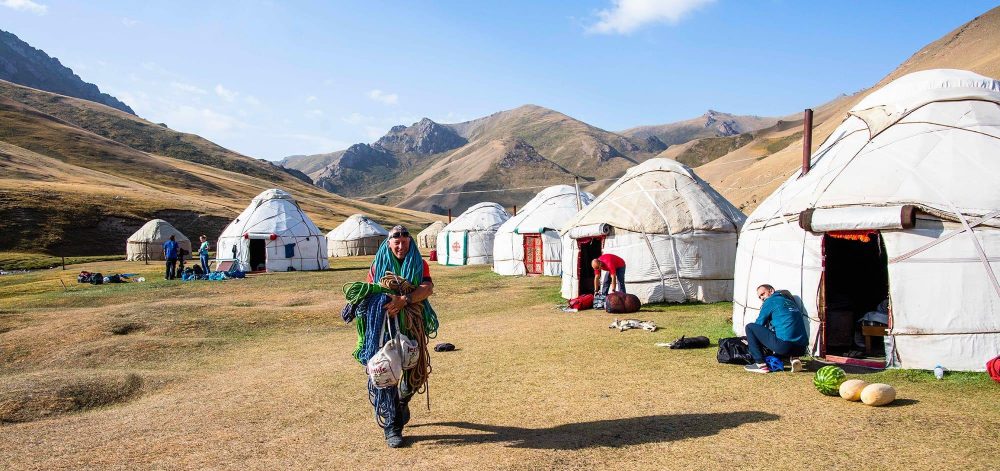
So, giving thought to an alpine day....
If I have a client keen to attempt an alpine ice route, which could be a north face or gully style climb.... Do I pack two half ropes? I get to the hut and the weather changes and I'm now looking at other alternatives, or maybe the face isn't in the condition you thought, maybe access across the bergschrund has become difficult or the client isn't now feeling great with the original day in mind?
Have I complicated my options of route and peak choice by packing two half ropes?
I decide on a great alternative route and peak that fits better with the weather and conditions.
I then need to ask myself, am I happy guiding rocky AD style terrain using only one thin HALF rope, which will require maybe some glacial travel, short roping, moving together, pitching, lowering and possibly abseiling?
Even more of a question if I was guidng two clients.
Do I opt to guide on a single HALF rope, or do I guide with both HALF ropes running in parallel accepting all the extra complications and fuss this entails?
Or do I decide to commit to the first objective even though it’s not the best option, but the ropes and gear I’ve brought fit best with this?
Would it have been best to have carried in a SINGLE rope with the North face or mixed gully route in mind?
A SINGLE rope is perfect for glacial travel, pitched climbing, easy rope management on the belays, and great for maybe moving together and short roping off the top and then descending with.
Having said that, if part way up the climb and something happens, the client doesn't feel well, or maybe the route is taking longer than planned due to unforeseen conditions or the weather is changing far too quickly, then I might need to descend before getting to the summit. As a guide, would I feel exposed guiding on just a SINGLE rope, especially with a client that I haven’t climbed with before?
The SINGLE rope would allow for a change of plan though, being perfect for guiding over maybe a mixed AD ridge, but is it the best choice with the initial route in mind?
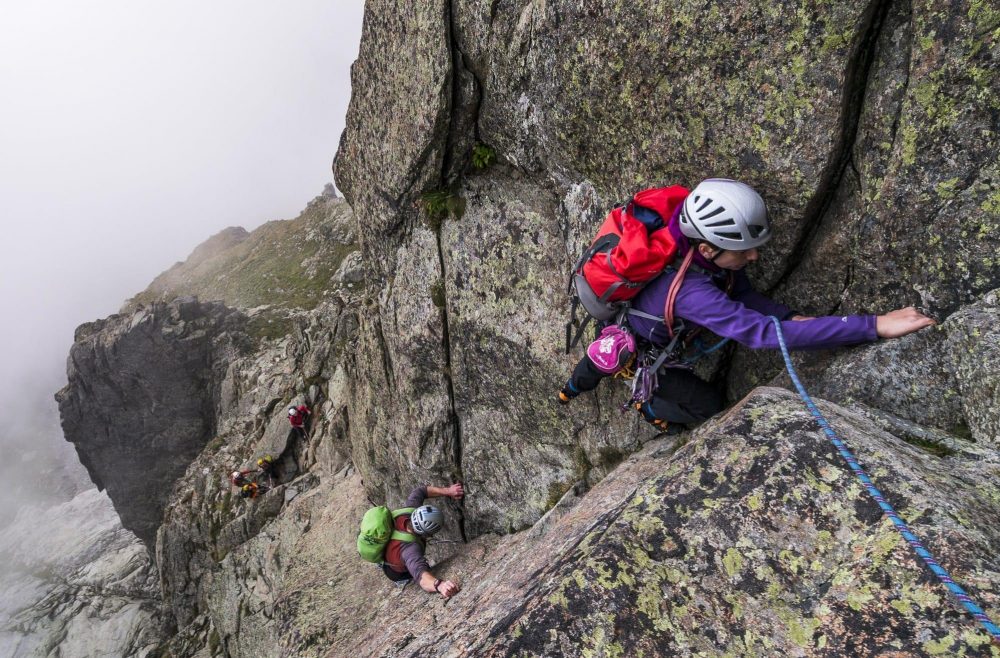
It’s all about that flexibility you need to be able to make the best decisions on the day for the route and peak in mind, and plans can change overnight.
Boxing yourself up with specific ropes for specific routes doesn’t allow much flexibility when guiding and could possibly lead you down a heuristic trap of pushing on to do a route you’ve planned that isn’t actually your best option.
Like having alternative routes or mountains in mind, giving thought to what ropes I choose offers me flexibility to deliver both a safer and a better structured day(s) or week.
So do I commit to an alternative AD ridge using only one HALF rope or do I push on climbing up a north face because I’ve only got one ‘SINGLE’ rope it's easier than descending? - All this from rope choice. With the changing conditions we’re now experiencing in the Alps at the moment, give thought to the bigger picture and not just a sight on a particular route, face or summit...the art of managing risk is through flexibility and the ability to change plans last minute. The guide paints a detailed picture of how a day(s) might play out considering many factors. Most of those factors can change both overnight or during a climb. Be prepared to keep repainting that picture in as much detail as possible....don't just paint a picture and hang it on the wall and leave it there!
Have a look at my thoughts around climbing on a ‘Single or Double Rope'
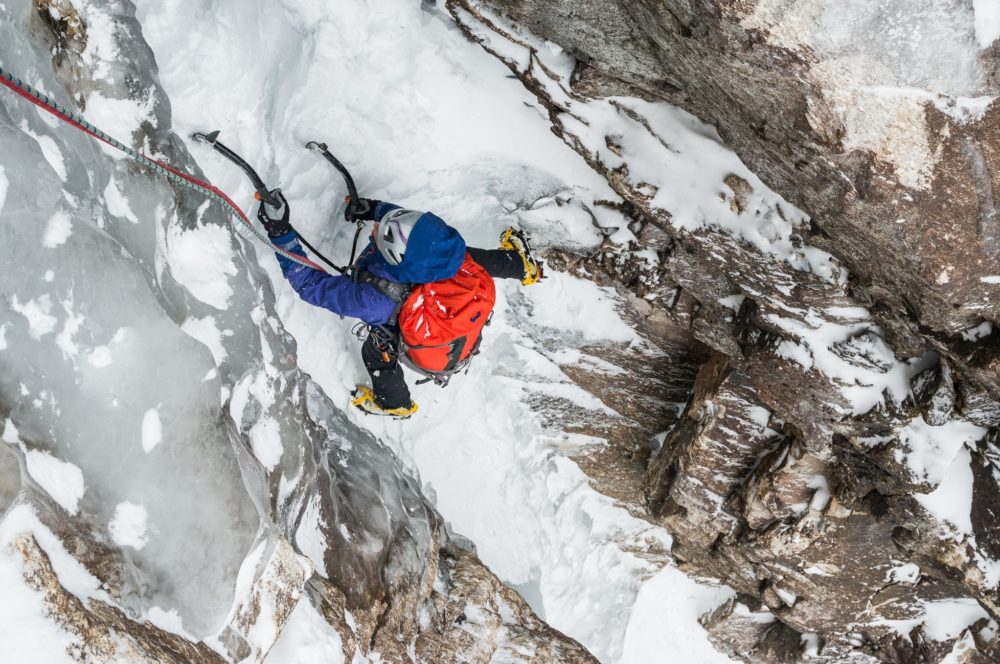
Icefall climbing
Icefall climbing is an interesting example when guiding one client or climbing with a friend -would TWIN ropes be a better option than two HALF ropes?
Icefall climbing on thinner HALF ropes.
So I tie on, my second puts me on belay and I head off up the start of the icefall. I place an ice screw a few metres up on my left into some good ice and clip my left rope into it. I continue on up and stick to the good ice on my left and place another screw a few metres higher up and again clip my left rope into it. The ice changes and I work my way rightwards to better ice higher up. Higher again I go to place an ice screw out right into some good ice and I fall off. I’ve now taken a large leader fall on a single HALF rope.
Now I weight only 86kg! With a backpack with extra kit in, boots, crampons, ice axes etc. I now probably weigh over 100kg and I’ve just taken a long leader fall onto a standard single HALF rope which has been tested with a 55kg weight on the end.
So, am I over loading the HALF rope beyond that it was originally tested for to a point that I should be concerned?
Apart from the ropes structure being put under a greater stress, the belayer will struggle to lock and hold the fall through their belay plate, especially with icy ropes or if they’re wearing thick winter gloves with less ‘feel’.
But it’s not unusual to be in that situation, whether your icefall or traditional rock climbing.
What about using TWIN ropes?
TWIN ropes mean that you use the ropes in the same way as if you were climbing on a single rope, it’s just that you clip both TWIN ropes into the same karabiner.
This works particularly well if icefall climbing and placing ice screws, as they’re fixed to the ice and can take an upward or outward pull. You then have maybe more security lead climbing with the added bonus of having two 60m ropes to abseil with.
As well as TWIN ropes, the modern SINGLE ropes that have a thinner diameter have gone a long way in giving me as a guide more security and also much flexibility when out guiding one or two clients.
The modern thinner SINGLE ropes ensures that as a guide I’m always leading on a SINGLE rope even if I’m using them in parallel. If I took a fall it would be on a SINGLE rope and easier for the belayer to hold. I can use the ropes for top roping at a single pitch venue or I could use them on their own if teaching leading with the client leading on one and myself using the other.
The thinner SINGLE ropes climbing the ice, give me greater flexibility when guiding, and the ability to have more options to deliver a safer day.
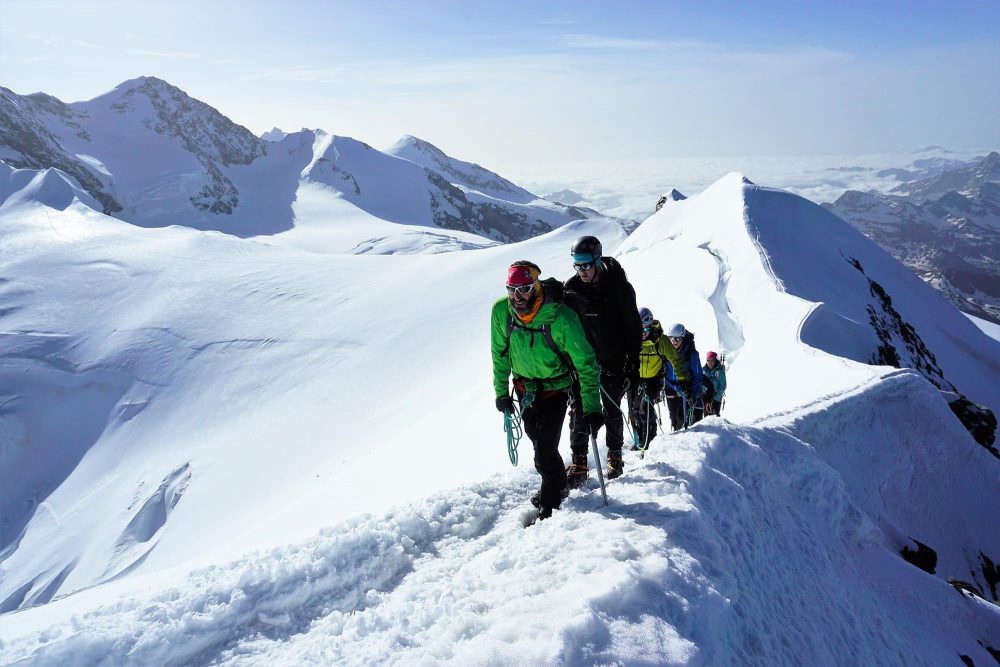
Alpine Mountaineering
In the past, I’ve always used a SINGLE 40m rope length when guiding general alpine mountaineering terrain....I used to tell everyone that this was the best for everything up to AD. I remember always buying an 80m rope with a friend and then cutting it in half to save money!
But with conditions in the mountains changing such as the permafrost which acts as like a glue holding together much of that alpine rock at certain altitudes melts away and the glaciers reseeding and dropping in volume, bergschrunds becoming more problematic to negotiate - I now recommend 50m ropes which give you that extra security and length to play with getting on and off alpine ridges and climbs.
Like conditions and the weather we are seeing today, we need to be even more flexible with our approach and not to just do something because that the way we’ve always done it that way.
So when packing your ropes, think about what you’re planning on climbing, options if you need to change that initial plan and the terrain around both these options that you might be moving over and then choose the ropes appropriate for that.
This doesn’t take into account a multitude of other combinations of rope choice that I take into account when guiding and working, but I hope it promotes some thought.
Local outdoor climbing retailers have a wealth of knowledge for you to tap into, so it’s worth going in and chatting through any plans you have before buying a rope.
Adrian Nelhams
My ropes
SINGLE ropes –
- Guiding two clients – Beal Opera 8.5mm
- Guiding one client traditional Rock climbing guiding up to HVS – Beal Joker 9.1mm
- Sport climbing - Beal Booster 9.7mm
HALF ropes - Guiding and climbing with one client or one friend – Beal Iceline 8.1mm
TWIN ropes Specific for Icefall climbing with one client or friend – Beal Gully 7.3mm
Related News Articles

ISM Virgin Peaks Expedition 2024 - Tien Shan Kyrgyzstan
ISM trip report of our trip into a very remote part of the Tien Shan Mountains, Kyrgyzstan
Read Article
Getting Into & Developing Your Climbing
Indoor bouldering is a great place to start if you want to try climbing for the first time. You can…
Read Article
ISM Virgin Peaks Expedition 2023 – Tien Shan Kyrgyzstan
ISM trip report of our trip into a very remote part of the Tien Shan Mountains, Kyrgyzstan.
Read Article
Kyrgyzstan Faces 2022
This year ISM celebrated 25yrs of expedition climbing in Kyrgyzstan, with a fantastic trip to the Fergana Range in the…
Read Article
